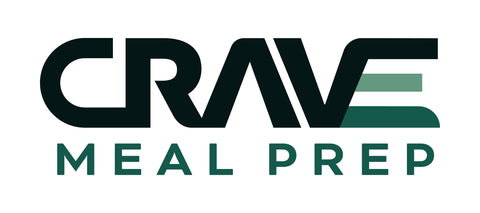Why Protein Swaps Work (Without Losing Flavor)
You want more plants on your plate but you still care about flavor, fullness, and getting enough protein. The good news: you’ve got lots of options. If you’ve wondered how to get protein without meat, you’ll find simple, tasty answers here. You’ll swap one ingredient, keep your favorite cooking styles, and still hit your protein goals—no bland salads required.
How to Get Protein Without Meat: Your Quick-Start Map
-
Match the texture you love.
Like juicy burgers? Go for crumbled tempeh or a lentil-walnut mix. Prefer tender strips? Try firm tofu, seitan, or marinated portobello. -
Season like you always do.
Use the same rubs, marinades, and sauces you’d use on chicken or steak. Smoked paprika, chili powder, garlic, soy sauce, BBQ sauce—go wild. -
Aim for 20–30g protein per meal.
That’s your sweet spot for muscle repair and steady energy. Mix and match plant proteins to hit it. -
Cook with high heat for crave-able browning.
Pan-sear, grill, roast, or air-fry. Browning = flavor. -
Add a “power pair.”
Toss in a protein booster (hemp seeds, edamame, or a scoop of quinoa) for an easy bump.
Sources of Protein Other Than Meat (and How Much You Get)
Protein amounts are typical for cooked/ready-to-eat servings and can vary by brand and prep method. Use these as helpful ballparks.
-
Tempeh (3 oz): ~15–18g
Firm, nutty, great for crumbles, skewers, and stir-fries. -
Tofu, extra-firm (1/2 cup / ~3.5 oz): ~10–12g
Press, marinate, then sear or bake for crispy edges. -
Seitan (3 oz): ~20–21g
Meaty texture; awesome for fajitas or sandwiches. (Skip if you avoid gluten.) -
Lentils, cooked (1 cup): ~17–18g
Hearty and budget-friendly; perfect for “ground meat” style dishes. -
Chickpeas, cooked (1 cup): ~14–15g
Roast for crunch, mash for salad, or simmer into stews. -
Black beans, cooked (1 cup): ~15g
Great in bowls, tacos, and burgers. -
Edamame, shelled (1 cup): ~16–17g
Toss into fried rice, bowls, and salads. -
Green peas, cooked (1 cup): ~8g
Blend into pesto or add to pasta and risotto. -
Quinoa, cooked (1 cup): ~8g
A complete protein and a perfect base for bowls. -
Buckwheat groats, cooked (1 cup): ~6g
Toasty flavor; swap in for rice or make a warm salad. -
Hemp seeds (3 Tbsp): ~9–10g
Sprinkle on bowls, pasta, or avocado toast. -
Pumpkin seeds (1/4 cup): ~8–9g
Crunchy topper for soups, bowls, and yogurt-style parfaits. -
Almonds (1 oz): ~6g
Snack, chop into slaws, or blitz into sauces. -
Peanut butter (2 Tbsp): ~7–8g
Whisk into noodles or spread on whole-grain toast. -
Nutritional yeast (2 Tbsp): ~8g
“Cheesy” flakes for popcorn, pasta, or creamy sauces.
Non Meat Protein: Swap Guide by the Meat You Usually Cook
If you usually make chicken breast
-
Swap with: Tempeh strips or extra-firm tofu cutlets
-
How to cook: Press tofu, marinate both in lemon-garlic or BBQ, then sear or grill.
-
Protein boost tip: Toss hemp seeds into any pan sauce.
If you usually make ground beef
-
Swap with: Lentil-mushroom-walnut crumbles or crumbled tempeh
-
How to cook: Pulse mushrooms and walnuts, fold into cooked lentils with taco spice or Italian herbs, then brown in a skillet.
-
Pro move: A splash of soy sauce or balsamic adds savory depth.
If you usually make steak fajitas
-
Swap with: Seitan strips or portobello slices + black beans
-
How to cook: Quick sear with onions and peppers. Finish with lime and cumin.
-
Protein boost tip: Add a scoop of quinoa to the tortillas or bowl.
If you usually make pulled pork
-
Swap with: Shredded extra-firm tofu + chickpeas
-
How to cook: Pan-crisp the shredded tofu, fold in BBQ sauce and warm chickpeas for extra protein and texture.
If you usually make breaded cutlets
-
Swap with: Breaded tofu “parm” or crispy chickpea patties
-
How to cook: Coat in seasoned breadcrumbs, bake or air-fry, then finish with marinara.
Build a High-Protein Plant Plate (That Actually Satisfies)
Use this simple formula to keep meals filling and balanced:
-
Protein anchor (20–30g): tempeh, tofu, seitan, lentils, beans, or edamame
-
Smart carbs (1–2 cups): quinoa, buckwheat, brown rice, whole-grain pasta, or potatoes
-
Color load (2+ cups): roasted veggies, leafy greens, slaw, or salsa
-
Flavor finishers: avocado, tahini, olive oil, nuts, seeds, herbs, hot sauce, citrus
Example bowls you’ll love:
-
Smoky Tempeh Quinoa Bowl: smoky tempeh, quinoa, roasted broccoli, corn, avocado, and a squeeze of lime.
-
Garlic-Ginger Tofu Stir-Fry: crispy tofu, edamame, peppers, and snap peas over brown rice with a quick soy-ginger sauce.
-
Chipotle Lentil Tacos: lentil crumbles in warm tortillas with cabbage slaw, pico, and pumpkin seeds.
7 Fast Swaps You’ll Actually Use This Week
-
Breakfast burrito: tofu scramble + black beans instead of eggs + bacon.
-
Deli-style sandwich: smashed chickpea salad with pickles and celery on whole-grain bread.
-
Pasta night: high-protein pasta + green pea “pesto” + hemp seeds.
-
Burger night: seared seitan patty or a lentil-mushroom burger with all your toppings.
-
Sheet-pan dinner: BBQ tofu or tempeh with sweet potatoes and Brussels sprouts.
-
Noodle bowl: peanut butter sauce on rice noodles with edamame and veggies.
-
Soup and salad: white bean tomato soup with a crunchy kale salad topped with almonds.
Pantry and Prep Tips (So You Don’t Run Out of Steam)
-
Press tofu once for the whole week.
Store it in an airtight container so it’s ready to marinate and cook fast. -
Batch-cook one pot of lentils or beans.
Freeze in flat bags for quick thawing. -
Keep “protein boosters” in arm’s reach.
Hemp seeds, pumpkin seeds, and nutritional yeast live happily in your pantry. -
Buy versatile marinades.
Teriyaki, BBQ, jerk, lemon-garlic—these carry the meal. -
Lean on your air fryer.
It crisps tofu and chickpeas in minutes. -
Pre-chop flavor starters.
Onions, peppers, and mushrooms make any plant protein taste meaty.
Flavor Tricks Meat Eaters Appreciate
-
Umami all day: soy sauce or tamari, miso, tomato paste, balsamic, mushroom powder, and nutritional yeast.
-
Smoke and char: smoked paprika, liquid smoke (a little goes a long way), or a hot grill pan.
-
Fat = satisfaction: don’t skip olive oil, tahini, avocado, or nut butters.
-
Acid pops: lemon, lime, and vinegar brighten rich flavors.
-
Salt early and lightly, then taste and adjust. That’s how you get that “restaurant” finish.
Non Meat Protein FAQs (Quick Hits)
Will you actually feel full?
Yes. Pair plant proteins with fiber-rich carbs and healthy fats and you’ll feel satisfied for hours.
Can you build muscle this way?
You can. Hit your daily protein target, spread it across the day, and train consistently.
What about gluten?
Seitan is wheat-based, so skip it if you avoid gluten. You’ve still got tofu, tempeh, lentils, beans, edamame, and quinoa.
Is soy okay every day?
Most people do well with moderate soy from whole-food forms like tofu, tempeh, and edamame. Rotate your proteins if you like variety.
Ready to Swap? Your One-Week Mini Plan
-
Pick two protein anchors (say, tofu and lentils).
-
Batch-prep on Sunday (press tofu, cook lentils, chop veggies).
-
Plan three dinners you can repeat for lunch leftovers:
-
Tofu stir-fry bowls
-
Lentil taco night
-
Tempeh sheet-pan with BBQ sauce
-
Keep boosters handy (hemp seeds, pumpkin seeds, and nutritional yeast).
-
Set a simple goal: 20–30g protein each meal. You’ll feel the difference fast.
Your Next Bite
You don’t have to ditch your favorite meals to eat more plants—you just swap the star of the plate. With these sources of protein other than meat, you can keep big flavor, get the protein you want, and cook with the same spices and sauces you already love. Start with one swap tonight and build from there. You’ll nail a non meat protein routine that fits your taste, budget, and schedule—no stress, just good food.




